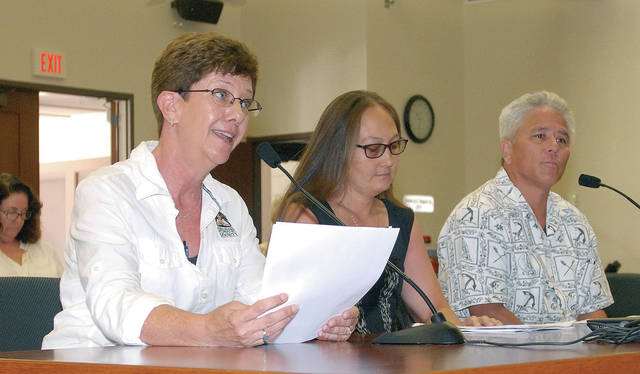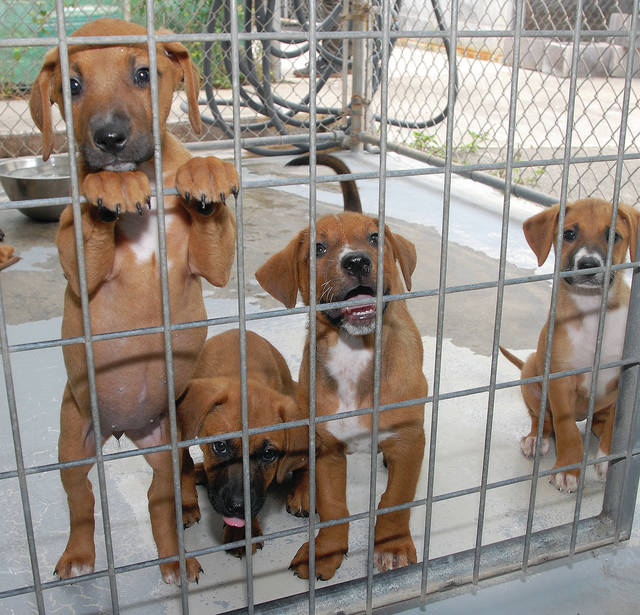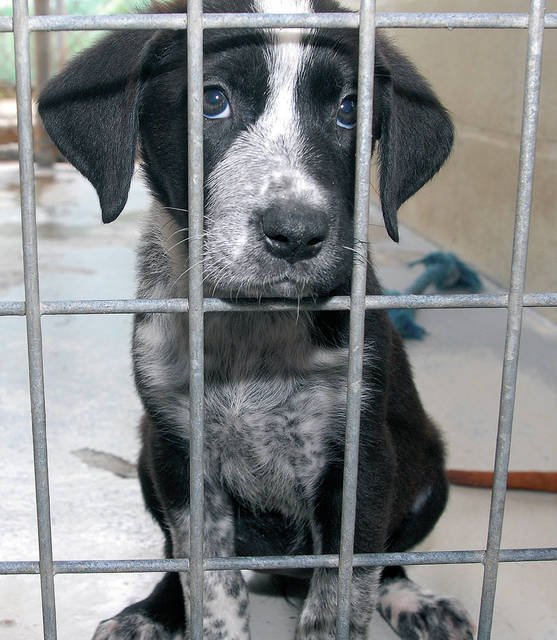HILO — County Council members are considering moving oversight of the Hawaii Island Humane Society from the Police Department to the mayor’s office or Finance Department to give the council more say over the nonprofit’s costs and procedures.
That wouldn’t bother police officials, who say a tight budget is making it more difficult to devote staff to oversee the program. The program was formerly under the Finance Department, but was moved some years ago to the Police Department because it’s a quasi-law-enforcement agency.
Several council members said during an update Tuesday before the Committee on Public Safety and Mass Transit that the Humane Society needs to lower its kill rate and increase public education and spay and neuter programs. With a new contract going out to bid next year, it’s especially important the organization gets a grip on its services, they said.
“Everybody’s failing that mission,” said Hilo Councilwoman Sue Lee Loy. “I don’t want to keep forking out the money and not moving the needle.”
Other council members said they’re seeing increased cooperation between the society and the various other nonprofit animal shelters and on the island. That will lead to greater progress, they noted.
“Everybody’s heart is in the right place,” said Kohala Councilman Tim Richards.
The county pays the Humane Society more than $2 million annually. Another $1 million comes from charitable fundraising, said Executive Director Donna Whitaker. The organization operates shelters in Kona, Waimea and Keaau.
But even more on council members’ minds than the finances were the many animals that are euthanized because adoptive homes can’t be found.
“Our euthanasia rates are way too high,” said Puna Councilwoman Eileen O’Hara, who asked for the informational session.
Richards, a veterinarian, and Hilo Councilman Aaron Chung bore down on apparently reluctant Humane Society officials, trying to get actual percentages and comparisons of kill rates with the rest of the United States.
“Give me a number,” Richards interrupted several times as Whitaker and veterinarian Kristina Henricks tried to explain how comparisons are difficult to make.
“We’re the only open-accept animal shelter on the island,” Whitaker said.
She said kill rates are high because they include mongooses, chickens, aggressive dogs and sick animals.
Henricks ultimately estimated that 55 percent of dogs and 60 percent of cats coming into the shelters are euthanized. That compares to 11.4 percent on average on the Mainland, according to figures provided by Henricks.
“We take them all,” Henricks said. “We can’t save them all. … We save as many as we can.”
Preventing more births by emphasizing the spay/neuter program is a priority, council members said. Last year, the Humane Society spayed or neutered 4,511 dogs and cats.
The shelters adopted out 2,321 dogs, 1,143 cats and 121 other animals. Another 92 were sent to mainland shelters and 1,157 were reunited with their owners, according to the organization’s annual report.
Chung asked why the Humane Society contract should remain under the Police Department.
“Maybe it’s something we should be looking at,” Chung said.
The Police Department’s Maj. Sam Thomas said after the meeting the agency will conform to whatever is decided by the powers that be. But given requests by the Mayor Harry Kim administration to reduce its budget, he doesn’t oppose the idea.
“It would certainly lighten our load,” Thomas said. “It would let us pull back more into our core services.”








